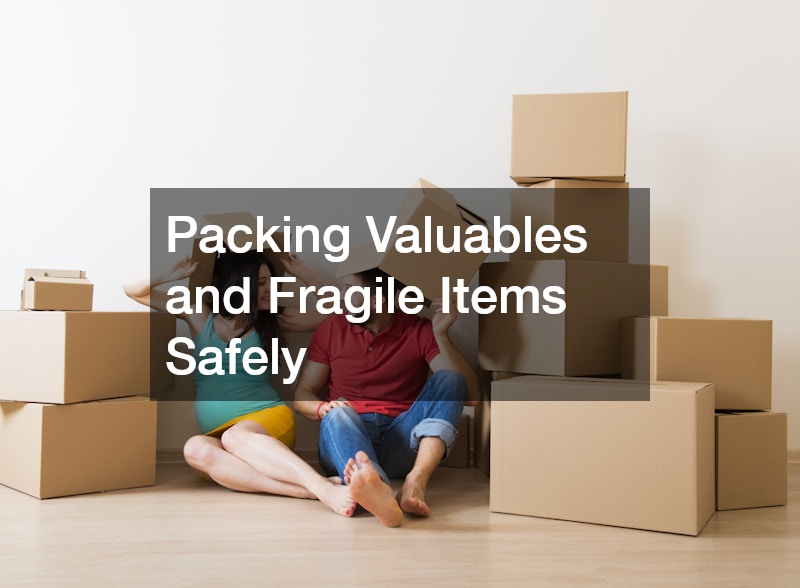
Moving to a new home can be both an exciting and overwhelming experience. It represents a fresh start and a chance to reimagine your living space, but it also requires careful planning and organization to make the process as smooth as possible. From sorting your belongings to scheduling movers and utilities, every detail matters when preparing for a residential move. Many people underestimate how much time and effort goes into the process until they are surrounded by boxes, to-do lists, and unexpected challenges. That’s why having a well-thought-out plan and a clear checklist can make all the difference, helping you stay on track and reduce stress as you transition into your new home.
Preparing Your Moving Timeline Early
The first step in any successful move is setting a timeline that fits your needs and lifestyle. It’s essential to think about how much time you’ll realistically need to pack, coordinate logistics, and handle the many small details that come with moving. By planning early, you give yourself the flexibility to tackle each stage without feeling rushed or overwhelmed. Setting deadlines for different milestones—like when to begin packing each room or when to confirm your movers—can help you avoid last-minute surprises. With a structured schedule in place, you’ll be able to prioritize what needs attention first and ensure that your residential moving experience is smooth from start to finish.
A well-organized timeline should account for every part of the process, including researching service providers, collecting packing supplies, and arranging transportation. It’s also smart to build in extra time for any unexpected delays, such as weather issues or changes in your closing date. Creating a checklist or using a moving app can help you visualize your progress as you complete each step. By spreading out major tasks, you’ll make the workload feel more manageable and avoid burnout as moving day approaches.
Sorting and Decluttering Your Belongings
Once your timeline is established, the next step is to evaluate everything you own and decide what should make the journey to your new home. Sorting and decluttering your belongings is one of the most productive ways to simplify your move, as it reduces the number of items you’ll need to pack and transport. Start by going room to room and categorizing items into what you’ll keep, donate, sell, or discard. This process can be surprisingly freeing, as it allows you to let go of things that no longer serve you while creating a cleaner, more organized living environment.
When you’re ready to transport your belongings, a professional moving company can make the process much easier by handling the heavy lifting and logistics. Their expertise ensures your items are moved efficiently and safely, minimizing the risk of damage or injury. Many movers also offer packing and unpacking services, which can be a game-changer if you’re short on time or energy. By combining your own organization efforts with professional assistance, you can streamline your move and focus on settling into your new space with confidence.
Gathering Essential Packing Supplies
Packing is one of the most time-consuming parts of the moving process, so gathering all your materials ahead of time can make things run much more smoothly. Having the right supplies not only keeps your items organized but also helps prevent damage during transit. Start by collecting sturdy boxes in various sizes, plenty of packing tape, bubble wrap, markers, and labels. You’ll also want to have protective padding for fragile items and furniture covers for larger pieces. Taking the time to get your supplies ready before you start packing ensures that you can move efficiently from one room to the next without unnecessary interruptions.
To make the process even easier, some local movers offer packing materials as part of their services or can deliver them directly to your door. This convenience allows you to skip the hassle of tracking down boxes from multiple stores. If you prefer to pack on your own, you can often find free or discounted supplies from local retailers or community groups. The key is to have more materials than you think you’ll need—running out of boxes or tape mid-packing can slow down your entire schedule. Once you’re fully stocked, create a system to pack room by room, labeling everything clearly to simplify the unpacking process later.
Labeling Boxes for Easy Unpacking
When you arrive at your new home, the last thing you’ll want to do is open every box just to find your coffee maker or phone charger. Labeling boxes thoroughly before your move helps you keep track of where everything belongs and makes unpacking far less stressful. It’s best to write clearly on each box, noting both the room and the contents inside. Using color-coded stickers or tape can also help you quickly identify which boxes go where, especially if multiple people are helping you move. Proper labeling doesn’t just save time—it also helps prevent fragile or valuable items from being misplaced or mishandled.
If you’re using a moving service, labeling can also help the movers place boxes in the correct rooms, saving you extra effort once you arrive. Consider numbering each box and keeping a simple inventory list on your phone or clipboard that matches the box number with its contents. This step is especially useful if you’re moving a long distance or have items going into storage temporarily. With a clear system in place, unpacking becomes a structured and stress-free process instead of a chaotic one.
Coordinating With Your Moving Company
Communication is key when working with professionals during your move. Once you’ve chosen your movers, stay in contact leading up to moving day to confirm details like arrival time, routes, and payment terms. Ask questions about their policies on fragile items, large furniture, or unexpected delays so you know exactly what to expect. The more information you share about your move—such as parking availability, access points, and potential obstacles—the smoother things will go. Clear communication ensures everyone is on the same page and helps prevent confusion or last-minute surprises.
Working with a local moving company also offers added benefits, such as their familiarity with the area and flexibility to handle unforeseen challenges. Local teams often provide more personalized service, allowing them to adjust quickly if plans change or new needs arise. Make sure to confirm your inventory, verify insurance coverage, and get everything in writing before moving day. A reliable company will be transparent, organized, and responsive—traits that make all the difference when trusting someone to transport your personal belongings safely and efficiently.
Managing Utilities and Address Changes
One of the most commonly overlooked parts of moving is handling all the logistical details that don’t involve boxes or furniture. Managing your utilities and address changes should be high on your checklist to avoid unnecessary disruptions after you’ve moved. Before your move, contact your utility providers to schedule disconnection dates for your old home and activation dates for your new one. This includes water, gas, electricity, internet, and trash collection. You’ll also need to update your address with banks, credit cards, insurance providers, and subscription services to ensure that bills and mail are properly redirected. Handling these tasks early helps you transition smoothly and prevents any lapses in essential services.
If you find yourself between homes or waiting on move-in dates, you may need temporary storage solutions for your belongings. A mini storage unit can be an excellent option for keeping furniture and boxes safe during this period. These small, secure units allow you to move at your own pace and prevent clutter from piling up in your new space. Look for facilities with flexible rental terms, climate control, and reliable security. By staying organized with your utility transfers and using convenient storage when needed, you can make your move more efficient and stress-free.
Packing Valuables and Fragile Items Safely
When it comes to delicate or high-value possessions, extra care is essential. Packing fragile items properly reduces the risk of damage and gives you peace of mind throughout the moving process. Start by gathering high-quality materials such as bubble wrap, foam padding, packing paper, and sturdy boxes. Wrap each item individually, securing loose parts and filling empty spaces inside boxes to prevent shifting. Clearly label these boxes as “Fragile” and indicate which side should face up. Keeping fragile items organized and protected not only makes unpacking easier but also helps movers handle them correctly.
If you have items that need to be temporarily stored, a local self storage unit is an ideal solution. It offers a controlled environment where you can safely keep artwork, glassware, or electronics until your new home is ready. Choose a unit with consistent temperature and humidity levels to protect against warping or cracking. For especially valuable possessions, you may even consider purchasing additional insurance coverage for the move. Taking these precautions ensures that your most cherished belongings arrive at your new home intact and ready to enjoy.
Planning for Moving Day Logistics
As moving day approaches, preparation is the key to avoiding chaos. Planning the logistics in advance ensures everything runs on schedule, from loading your boxes to arriving at your new address. Make a detailed plan that includes your start time, route, estimated travel duration, and any special instructions for the movers. It’s also a good idea to pack an essentials box with items like toiletries, snacks, chargers, medications, and basic cleaning supplies so you’re not rummaging through boxes later. Keeping communication open with your movers and maintaining a calm, organized approach will help the day go smoothly.
One smart way to simplify moving day is to use storage containers if you’re managing the move yourself. Portable containers can be dropped off at your home days in advance, giving you time to load them at your own pace. Once filled, the company can transport the containers directly to your new location or hold them temporarily in storage. This flexibility makes it easier to handle unexpected changes, like closing delays or renovations in progress. By combining thoughtful planning with adaptable moving options, you can make your moving day efficient, low-stress, and perfectly coordinated.
Cleaning and Inspecting Your Old Home
Before officially closing the door on your old home, it’s important to give it a final clean and inspection. A thorough cleaning not only leaves a good impression for the next occupants but also helps you identify any forgotten items or minor repairs that may still need attention. Go room by room, wiping down surfaces, vacuuming floors, and checking closets, attics, and basements. This step also gives you one last chance to document the home’s condition, which can be especially important if you’re renting and hoping to receive your full security deposit. Taking the time to clean and inspect ensures that you leave the property in great shape and helps you walk away with confidence.
If you find yourself disposing of a large amount of clutter, old furniture, or renovation debris, consider renting a dumpster rental for the cleanup process. These rentals make it easy to manage bulk waste efficiently without multiple trips to the landfill. Choose a size that fits your needs and schedule delivery and pickup around your moving timeline. Having a dumpster on-site simplifies the cleanup process and helps you stay organized as you prepare for the final walk-through. With a clean, empty home behind you, you can focus entirely on what lies ahead in your new space.
Settling Into Your New Space Comfortably
Once the boxes are unloaded and the furniture is in place, it’s time to transform your new house into a home. Start by unpacking essentials first—bedroom items, kitchen tools, and toiletries—so that your most-used spaces are functional right away. As you unpack, take your time organizing each room to match your preferences and daily routines. You might also want to do a quick clean before putting things away, as dust can accumulate during the move. Settling in gradually allows you to adjust to your new surroundings, learn the layout, and make the space feel truly yours.
If you handled your own move, returning or coordinating truck rentals should be one of your final logistical tasks. Many rental companies offer flexible drop-off locations, so you can return the vehicle near your new home for convenience. Be sure to refuel and inspect the truck for any damage before returning it to avoid unexpected fees. Once all your moving tasks are wrapped up, take time to relax and enjoy your new environment. Whether it’s decorating, meeting your neighbors, or simply sitting down for your first meal in your new kitchen, celebrating this milestone is an important part of the moving journey.
A residential move involves countless details, but with the right checklist and preparation, it doesn’t have to feel overwhelming. By planning early, decluttering, packing efficiently, and coordinating logistics with professionals, you can ensure a seamless transition from one home to the next. Remember to manage your utilities, take advantage of local storage options, and clean both your old and new spaces to make the process smoother. Every step on your checklist brings you closer to settling comfortably into your new surroundings.
Ultimately, moving is more than just a physical transition—it’s the beginning of a new chapter in your life. With patience, organization, and the right resources, you can make the experience positive and rewarding. Your new home is a blank canvas full of possibilities, and by handling your move with care and intention, you’ll set the stage for new memories and opportunities in a space that truly feels like your own.







